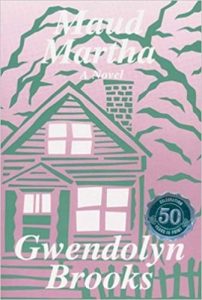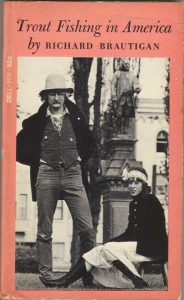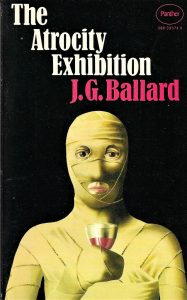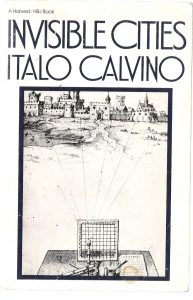
by Michael Loveday
In recent years, there’s been an exponential increase in the publication of novels-/novellas-in-flash. It may not be too extreme to claim this linked but fragmented short-short form as a definitive style for our times.
In our daily lives, we skitter on smartphones between different webpages, news items, and clickable links, picking up each brief story then leaving it behind, moment by moment. Simultaneously, we search for some grand overarching narrative for the world – and our place in it. That narrative can at times feel out of reach, unless we read carefully, alert to the shifts in what we encounter.
Is there a literary form that offers a closer approximation of contemporary Western existence? The novella-in-flash articulates a modern tension between two opposing worldviews. One sees the individual life as a ‘story’ (cf. narrative psychologist Dan McAdams: “Life stories are personality”), something with a past, present and future – an arc. Another, following Eastern religious traditions and the ‘mindfulness’ movement so popular recently in the West, sees life as “nothing more than a constant series of present moments to be experienced” (Richard Carlson). The tension between these opposites finds its most complete expression within the novella-in-flash / novel-in-flash: the form emphasises the importance of single, illuminated moments yet somehow suggests that a broader arc exists beyond these epiphanies, even as it wilfully deprives us of linear storyline.
However, despite its contemporary burst of popularity, the novel-/novella-in-flash is a form with roots. My previous essay for SmokeLong Quarterly highlighted classic examples such as Evan S. Connell’s Mrs Bridge (1959) and Mr Bridge (1969), Joan Didion’s Play It as it Lays (1970), and Sandra Cisneros’s A House on Mango Street (1984). I thought it might be worth showcasing some further classic examples for readers to explore from the 20th century, all written before terms for the category (such as ‘novella-in-flash’, ‘flash fiction novella’, ‘novel-in-flash’, or ‘flash novel’) were actually coined. There are twelve books described in what follows, and this essay is divided into three parts.
The novel-/novella-in-flash is such a marriage of opposites – abbreviated parts building an expansive but gap-ridden whole – that its offspring are endlessly varied. And I’m starting to come to the conclusion that, for some fundamental, structural reason, maybe all novellas-/novels-in flash are a little bit screw-loose.
Strange feasts: a good and necessary thing.
Let’s dive in.
- Gwendolyn Brooks – Maud Martha (1953)
 On reading this book more than 60 years after its first publication, a question nagged at me: how much has changed since 1953? Maud Martha provides a radical commentary on the life of an African-American woman in a 1950s American society structured by white patriarchy; it still acts as coruscating social criticism even after so much time. The book is fascinated by manifestations of class and social convention – how communities put up barriers, engage in power struggles, how we might strive to be authentic living within such systems. Brooks, the first African-American writer to win the Pulitzer Prize, fuses class consciousness with profound insight into communal black experience. The book takes the form of a rags-to-not-really-riches story. We move from impressionistic episodes of childhood into Maud Martha’s work, marriage, and motherhood. She grapples with casual – and not-so-casual – racism and confronts what it means to be black in a time and place where other African-Americans also express prejudice towards her for her very dark skin – even her own husband. At times, she is an outsider, at other times welcome. She learns to make do, yet still feels an urge for something more than survival. The novel puts Maud Martha into simple settings – a view of dandelions, carving a chicken, dealing with a mousetrap, watching street musicians – that are catalysts for stunningly profound explorations of meaning. And its portraits of secondary characters are shrewdly observed, utterly authentic and alive. In its examinations of class and race, Maud Martha reads like a path-breaker for both Evan S. Connell’s study of middle-class womanhood Mrs Bridge (1959) and Sandra Cisneros’s novella-in-flash about Mexican-American life, The House on Mango Street (1984). It is also, as a literary work, a peerless thing of elegance and beauty.
On reading this book more than 60 years after its first publication, a question nagged at me: how much has changed since 1953? Maud Martha provides a radical commentary on the life of an African-American woman in a 1950s American society structured by white patriarchy; it still acts as coruscating social criticism even after so much time. The book is fascinated by manifestations of class and social convention – how communities put up barriers, engage in power struggles, how we might strive to be authentic living within such systems. Brooks, the first African-American writer to win the Pulitzer Prize, fuses class consciousness with profound insight into communal black experience. The book takes the form of a rags-to-not-really-riches story. We move from impressionistic episodes of childhood into Maud Martha’s work, marriage, and motherhood. She grapples with casual – and not-so-casual – racism and confronts what it means to be black in a time and place where other African-Americans also express prejudice towards her for her very dark skin – even her own husband. At times, she is an outsider, at other times welcome. She learns to make do, yet still feels an urge for something more than survival. The novel puts Maud Martha into simple settings – a view of dandelions, carving a chicken, dealing with a mousetrap, watching street musicians – that are catalysts for stunningly profound explorations of meaning. And its portraits of secondary characters are shrewdly observed, utterly authentic and alive. In its examinations of class and race, Maud Martha reads like a path-breaker for both Evan S. Connell’s study of middle-class womanhood Mrs Bridge (1959) and Sandra Cisneros’s novella-in-flash about Mexican-American life, The House on Mango Street (1984). It is also, as a literary work, a peerless thing of elegance and beauty.
- Trout Fishing in America, by Richard Brautigan (1967)
 A bizarre book, supposedly about trout fishing, but really an excuse for Brautigan to expose his absurdist imagination. Fishing is the thread between these stories but ‘Trout Fishing in America’ has various other identities – it is also a hotel, a person, and a book within a book. Surely only Brautigan could create wilful mischief like this: “His eyes were like the shoelaces of a harpsichord.” (p.26). “I remember mistaking an old woman for a trout stream in Vermont, and I had to beg her pardon. ‘Excuse me,’ I said, ‘I thought you were a trout stream.’ ‘I’m not,’ she said.” (p.5) It might all disappear out of orbit if it weren’t tethered by Brautigan’s use of setting. The stories are grounded in the realities of rural and small-town life in West Coast America – Idaho, Oregon, California. Be prepared for repeated descriptions of attempts to fish in creeks and lakes. But the locations are often a springboard for taking us into madder directions, such as the shop that supposedly sells portions of trout stream and keeps a retail display of parts of the stream and its various waterfalls. The narrator fondly introduces us to a cast of eccentrics as he travels: winos who are planning to start a flea circus, a bookstore owner who arranges spontaneous sex with strangers, an amputee who gets packed into a shipping crate. The political, social and historical context of the era is woven, subtly or not so subtly, into the background. Here is Brautigan’s mad, maddening, inspired formulation of the great American novel.
A bizarre book, supposedly about trout fishing, but really an excuse for Brautigan to expose his absurdist imagination. Fishing is the thread between these stories but ‘Trout Fishing in America’ has various other identities – it is also a hotel, a person, and a book within a book. Surely only Brautigan could create wilful mischief like this: “His eyes were like the shoelaces of a harpsichord.” (p.26). “I remember mistaking an old woman for a trout stream in Vermont, and I had to beg her pardon. ‘Excuse me,’ I said, ‘I thought you were a trout stream.’ ‘I’m not,’ she said.” (p.5) It might all disappear out of orbit if it weren’t tethered by Brautigan’s use of setting. The stories are grounded in the realities of rural and small-town life in West Coast America – Idaho, Oregon, California. Be prepared for repeated descriptions of attempts to fish in creeks and lakes. But the locations are often a springboard for taking us into madder directions, such as the shop that supposedly sells portions of trout stream and keeps a retail display of parts of the stream and its various waterfalls. The narrator fondly introduces us to a cast of eccentrics as he travels: winos who are planning to start a flea circus, a bookstore owner who arranges spontaneous sex with strangers, an amputee who gets packed into a shipping crate. The political, social and historical context of the era is woven, subtly or not so subtly, into the background. Here is Brautigan’s mad, maddening, inspired formulation of the great American novel.
- The Atrocity Exhibition, by J.G. Ballard (1970)
 A man (variously named Travis, Travers, Traven, Talbot or Talbert) moves through liminal and apocalyptic landscapes, wrestling with ideas and images of violence, war, human anatomy, sexual intimacy and destruction. At times Travis / Travers / etc seems to be a scientist-researcher, or a doctor, at other times a traumatised patient. The stories hypnotically return to certain motifs – multi-storey car parks, empty cinemas, motorway underpasses, research laboratories, helicopters, the Vietnam War, landscapes that seem to be composed of human body parts, and mid-20th century figures such as Lee Harvey Oswald, JFK, Jacqui Kennedy, and Elizabeth Taylor. Travis is researching something about humanity, obsessed with recreating car crashes and the deaths of celebrities. The research seems to be a manifestation of his own neurosis or psychosis. Ballard’s writing is clinically detached, even when describing violence and eroticism. Cut up, collage and found text techniques informed his process. The text seems to undermine its very authenticity, toying with pastiche even as it presents itself as dystopian science fiction. In the final chapters, the pattern of the novel disintegrates, first with a series of quasi-scientific reports about violence, war, sexuality and the media, then extended passages mimicking the lineages in the Book of Genesis (“Barbara H. Nicolosi shot Geraldine Carro. And Geraldine Carro shot Jeanne Voltz.” (p.159)). Two closing chapters consist of articles taken from magazines about plastic surgery, with the patients’ names replaced with celebrity identities – Princess Margaret and Mae West. Although the book anticipates much of 21st century experience, in today’s politically sensitive environment we might still ask, is the world ready for this book? A tour de force of British experimental fiction.
A man (variously named Travis, Travers, Traven, Talbot or Talbert) moves through liminal and apocalyptic landscapes, wrestling with ideas and images of violence, war, human anatomy, sexual intimacy and destruction. At times Travis / Travers / etc seems to be a scientist-researcher, or a doctor, at other times a traumatised patient. The stories hypnotically return to certain motifs – multi-storey car parks, empty cinemas, motorway underpasses, research laboratories, helicopters, the Vietnam War, landscapes that seem to be composed of human body parts, and mid-20th century figures such as Lee Harvey Oswald, JFK, Jacqui Kennedy, and Elizabeth Taylor. Travis is researching something about humanity, obsessed with recreating car crashes and the deaths of celebrities. The research seems to be a manifestation of his own neurosis or psychosis. Ballard’s writing is clinically detached, even when describing violence and eroticism. Cut up, collage and found text techniques informed his process. The text seems to undermine its very authenticity, toying with pastiche even as it presents itself as dystopian science fiction. In the final chapters, the pattern of the novel disintegrates, first with a series of quasi-scientific reports about violence, war, sexuality and the media, then extended passages mimicking the lineages in the Book of Genesis (“Barbara H. Nicolosi shot Geraldine Carro. And Geraldine Carro shot Jeanne Voltz.” (p.159)). Two closing chapters consist of articles taken from magazines about plastic surgery, with the patients’ names replaced with celebrity identities – Princess Margaret and Mae West. Although the book anticipates much of 21st century experience, in today’s politically sensitive environment we might still ask, is the world ready for this book? A tour de force of British experimental fiction.
- Invisible Cities, by Italo Calvino (1972)
 Calvino offers us 55 fictitious cities, each described by Marco Polo to the emperor Kublai Khan as audience. Readers will be increasingly awestruck by the sheer ingenuity on display as Calvino sustains the project with breathtaking variety in portrait after portrait. The detailed and technical focus of its world-building can be related to fantasy and dystopian science fiction, but there’s a definite philosophical edge to this weird “travel fiction” hybrid. These are prose poems unlike any others. Each city expresses a distinct way of living, and even could be said to resemble a state of mind; through their notably feminised names (Laudomia, Irene, Clarice, Phyllis, Beersheba, etc), they might even somehow be standing in for states of womanhood, although there’s nothing particularly gendered about the details of the descriptions themselves. Twinned, doubled, split and shadowed cities feature repeatedly: if these cities are characters, they are emphatically late 20th century, post-Freudian representations of how we live. These cities are all uncanny, unheimlich, unhomely, and wild, untameable forces compete for authority with forces of order and benign structure. A recurring narrative ‘frame’ consists of the conversational exchanges between Marco Polo and Kublai Khan, slowly building a portrait of two sparring but fond intellects querying meanings in order to settle upon a better understanding of the world. Ultimately, all these invisible cities speak to a single location – as Marco Polo puts it: ‘Every time I describe a city I am saying something about Venice’.
Calvino offers us 55 fictitious cities, each described by Marco Polo to the emperor Kublai Khan as audience. Readers will be increasingly awestruck by the sheer ingenuity on display as Calvino sustains the project with breathtaking variety in portrait after portrait. The detailed and technical focus of its world-building can be related to fantasy and dystopian science fiction, but there’s a definite philosophical edge to this weird “travel fiction” hybrid. These are prose poems unlike any others. Each city expresses a distinct way of living, and even could be said to resemble a state of mind; through their notably feminised names (Laudomia, Irene, Clarice, Phyllis, Beersheba, etc), they might even somehow be standing in for states of womanhood, although there’s nothing particularly gendered about the details of the descriptions themselves. Twinned, doubled, split and shadowed cities feature repeatedly: if these cities are characters, they are emphatically late 20th century, post-Freudian representations of how we live. These cities are all uncanny, unheimlich, unhomely, and wild, untameable forces compete for authority with forces of order and benign structure. A recurring narrative ‘frame’ consists of the conversational exchanges between Marco Polo and Kublai Khan, slowly building a portrait of two sparring but fond intellects querying meanings in order to settle upon a better understanding of the world. Ultimately, all these invisible cities speak to a single location – as Marco Polo puts it: ‘Every time I describe a city I am saying something about Venice’.
Come back soon for the next four mini reviews of classic novellas-in-flash (all written before the term was coined).
__________________________________
 Michael Loveday’s novella-in-flash Three Men on the Edge (V. Press, 2018) was shortlisted for the 2019 Saboteur Award for Best Novella. He also writes poetry, with a pamphlet He Said / She Said published by HappenStance Press (2011). He has been judge of the 2019 and 2020 Novella-in-Flash competitions at Bath Flash Fiction Award. In addition to working as an editor for novellas-in-flash, he helps writers incubate ideas for novellas through an online one-to-one course: https://novella-in-flash.com/.
Michael Loveday’s novella-in-flash Three Men on the Edge (V. Press, 2018) was shortlisted for the 2019 Saboteur Award for Best Novella. He also writes poetry, with a pamphlet He Said / She Said published by HappenStance Press (2011). He has been judge of the 2019 and 2020 Novella-in-Flash competitions at Bath Flash Fiction Award. In addition to working as an editor for novellas-in-flash, he helps writers incubate ideas for novellas through an online one-to-one course: https://novella-in-flash.com/.

 The core workshop of SmokeLong Fitness is all in writing, so you can take part from anywhere at anytime. We are excited about creating a supportive, consistent and structured environment for flash writers to work on their craft in a community. We are thrilled and proud to say that our workshop participants have won, placed, or been listed in every major flash competition. Community works.
The core workshop of SmokeLong Fitness is all in writing, so you can take part from anywhere at anytime. We are excited about creating a supportive, consistent and structured environment for flash writers to work on their craft in a community. We are thrilled and proud to say that our workshop participants have won, placed, or been listed in every major flash competition. Community works.